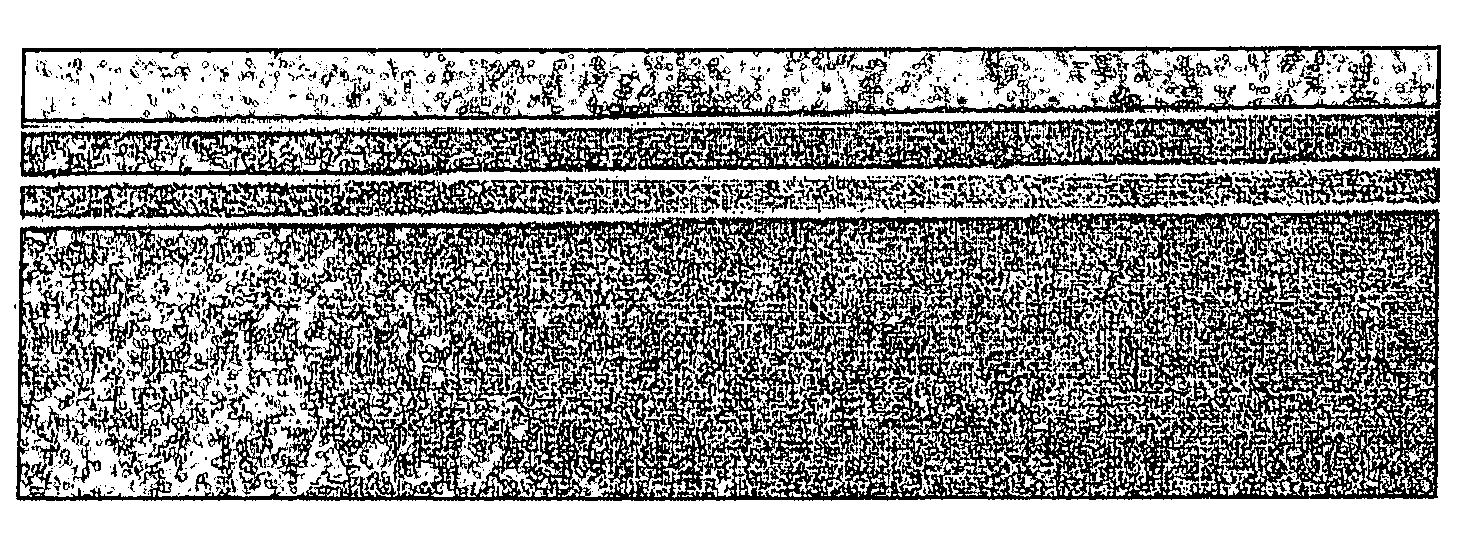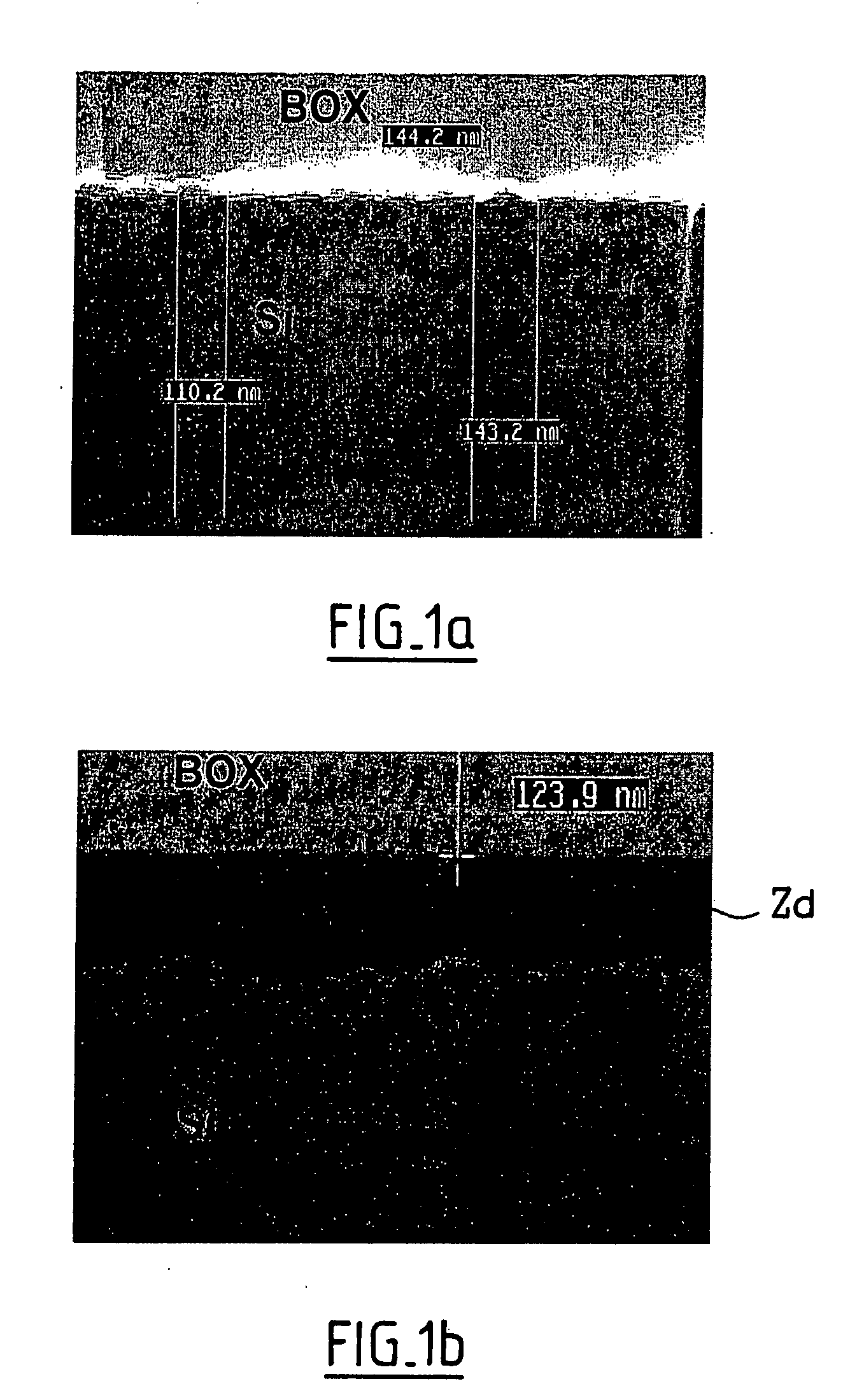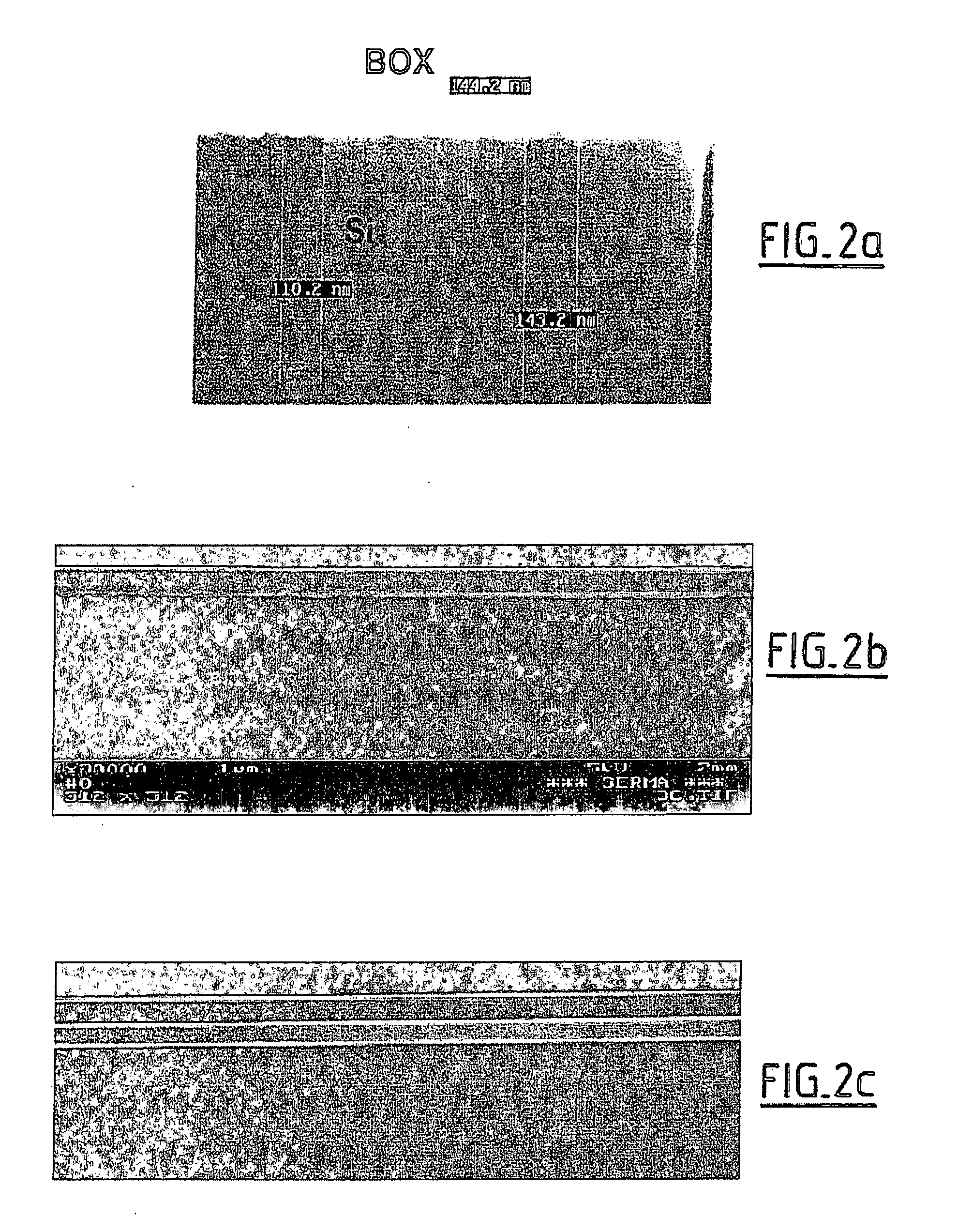Treatment for bonding interface stabilization
a stabilization treatment and bonding technology, applied in the direction of basic electric elements, semiconductor/solid-state device manufacturing, electric devices, etc., can solve the problems of insufficient stabilization of the bonding interface, partial solutions including long-duration stabilization annealing to stabilize the bonding interface are not completely satisfactory, and the thin layer of the donor material may not support furnace stabilization annealing for several hours, etc., to achieve the effect of facilitating the bonding of the donor substra
- Summary
- Abstract
- Description
- Claims
- Application Information
AI Technical Summary
Benefits of technology
Problems solved by technology
Method used
Image
Examples
first embodiment
[0048]In the scope of a preferential variation of this first embodiment, the thin layer thinning step is carried out between each RTA operation. Thinning may be carried out by the implementation of thermal oxidation at a temperature of less than or equal to 1000° C. followed by desoxidation as described above.
[0049]In accordance with another embodiment of the invention, the stabilization annealing step may be replaced by performing a bonding energy reinforcement step carried out before detachment, and a stabilization step for the bonding interface carried out by implementing one or more rapid thermal annealing operations after detachment.
second embodiment
[0050]For purposes of illustration and not limitation, as embodied herein, the bonding energy reinforcement step may be implemented before bonding and preferably includes a plasma treatment of one and / or the other of the surfaces to be bonded. Specifically, in the scope of this second embodiment, the donor substrate (oxidized or not oxidized in such a way as to form an oxide layer used as the insulating layer inserted between the thin layer and the support substrate) and / or the donor substrate (oxidized or not oxidized for the same reasons) is (are) exposed to plasma, before close contact with the faces to be bonded.
[0051]The duration of exposure to plasma is between 5 and 60 seconds; it typically is approximately 30 seconds. Equipment conventionally utilized in microelectronics to perform dry etching may be utilized in order to implement this plasma treatment step. In particular, this is equipment allowing RIE (Reactive Ion Etching) type etching to be carried out. Suitable equipmen...
PUM
 Login to View More
Login to View More Abstract
Description
Claims
Application Information
 Login to View More
Login to View More - R&D
- Intellectual Property
- Life Sciences
- Materials
- Tech Scout
- Unparalleled Data Quality
- Higher Quality Content
- 60% Fewer Hallucinations
Browse by: Latest US Patents, China's latest patents, Technical Efficacy Thesaurus, Application Domain, Technology Topic, Popular Technical Reports.
© 2025 PatSnap. All rights reserved.Legal|Privacy policy|Modern Slavery Act Transparency Statement|Sitemap|About US| Contact US: help@patsnap.com



